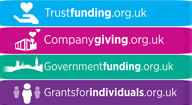Direct and digital marketing, Marketing, Marketing & communications
Five ways you can get the most out of Google Analytics
Working with data? Google Analytics can be your best friend...
Google Analytics is an incredibly useful tool. It contains a huge amount of information about how your donors interact with your website and your donation pages. But there is often too much information, and it can be difficult to identify the key things to monitor.
Here are five of my top suggestions for getting the most out of Google Analytics.
Get your tracking right
Every time you direct people from a different channel (e.g Facebook or email) to your website, Google Analytics does its best to work out where they’ve come from (social media, search etc.). But it doesn’t always get it right. If you want your reports in Google Analytics to be as accurate as they can be, you really need to use tracked URLs created in Google’s URL builder to specify exactly where website visitors have come from.
This blog post by Annie Cushing is the definitive guide to understanding how tracking and tagging URLs work in Google Analytics:
Use the enhanced e-commerce functionality
I often work with organisations who have activated e-commerce tools in Google Analytics, but it hasn’t been set up correctly on their website. The idea of enhanced e-commerce reports is to show you transactions such as donations and purchases, which products have been purchased, type of donation made, where donors drop out of the donation process and so on.
It’s not easy to set up so make sure you have worked through this list.
Your developers should also follow Google’s documentation. Click here for more.
Once this is set up correctly, you won’t need to worry about this again. You can focus on finding out lots of valuable information with Google Analytics’ e-commerce reports.
Conversion paths
Now you’ve got your e-commerce tracking working, it allows you to use a very valuable feature – conversion paths.
Normally, if I make a donation on your website via an email link from your organisation, Google Analytics will attribute the source of that donation to email. But what if I’d previously seen a Facebook post from your organisation too, clicked on that and came to your website but didn’t complete my donation?
Clearly that Facebook post deserves some credit for encouraging me to donate. Your Facebook marketing and email marketing combined have persuaded me to make my donation. Knowing that allows you to see the true value of your social media marketing, rather than attributing my donation entirely to email.
This is exactly what Google Analytics’ conversion paths tool will tell you – which channels are working in conjunction with each other to bring in donations.
Make sure your internal stakeholders have the right information
Senior management and trustees understandably want to see and understand the performance of digital channels, and the website. An issue I’ve often come across is senior management are given too much information, and struggle to really understand what is and isn’t working.
Rather than trying to tell them everything, with long and complex reports, try making a simple dashboard in Google Data Studio showing the top, key metrics. You can then provide them with the data they need to make decisions, rather than getting bogged down in the detail of things that are less relevant to them.
Segments
My favourite feature in Google Analytics is segments. Segments allow you to filter the reports in Google Analytics very quickly. This enables you to just identify specific users you want to see, and understand how they interacted with your website. That could be people who have visited specific pages, are from one particular country or who came via Facebook. You can use more than one segment simultaneously, allowing you to directly compare the behaviour of two different audiences.


